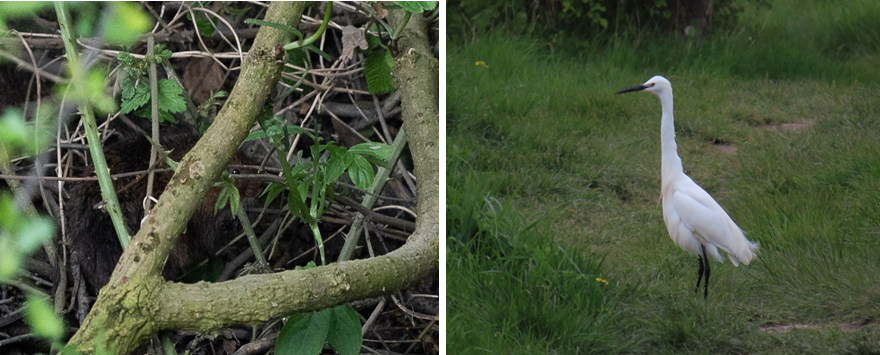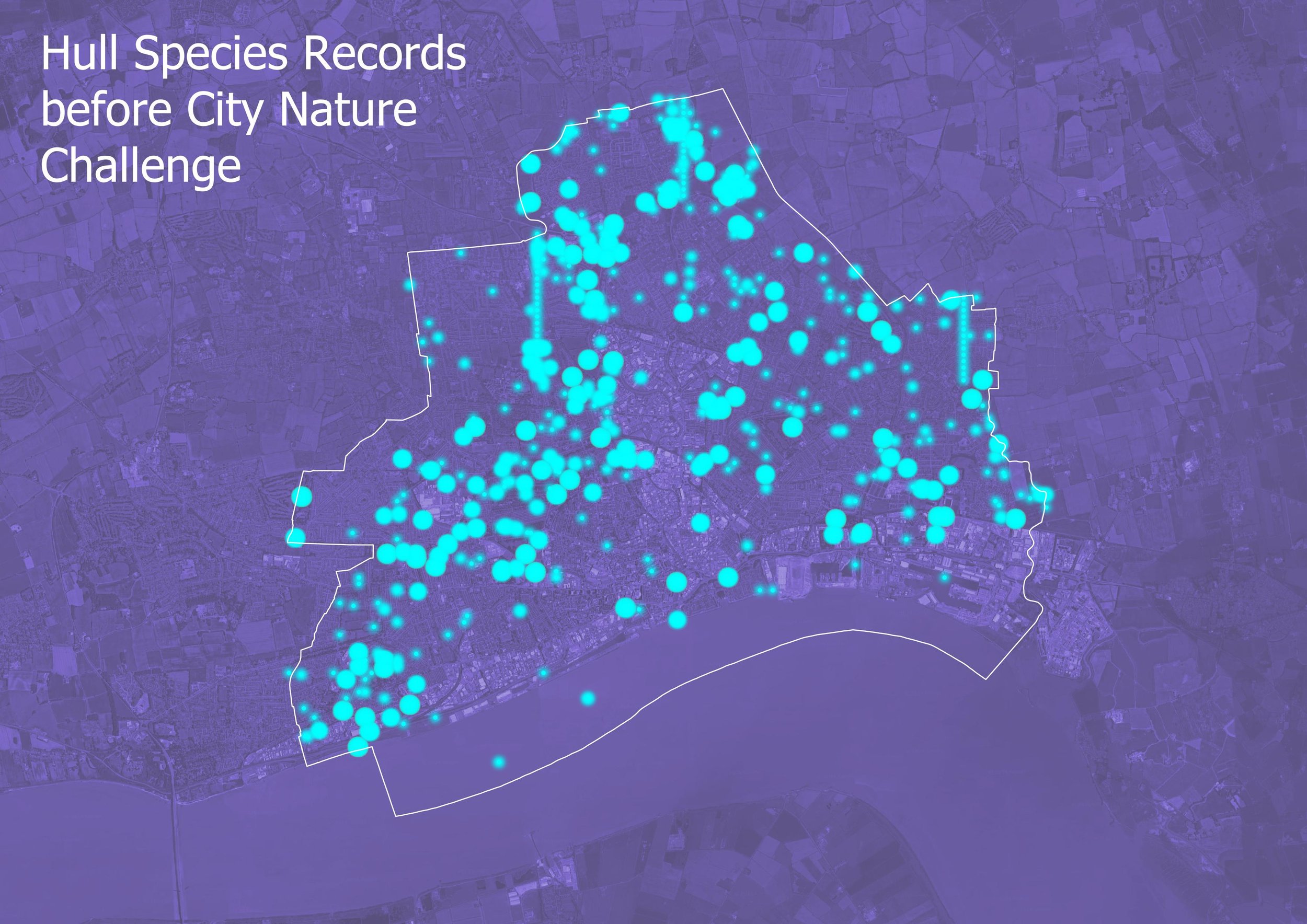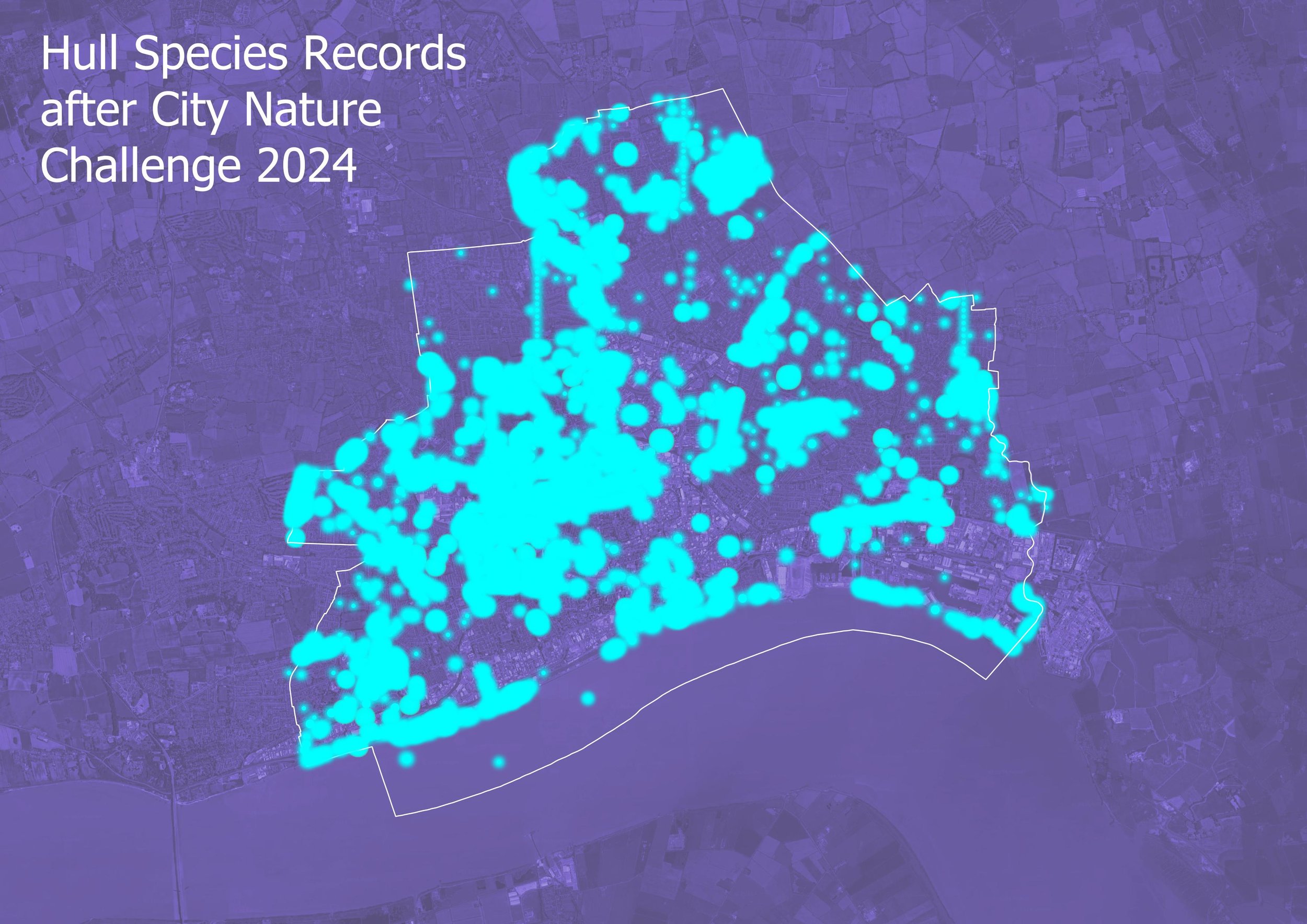Hull City Nature Challenge 2024 - the results are in!
Monday 6th May marked the end of the 2024 City Nature Challenge, a global bioblitz event – with a bit of competition! - which saw almost 700 cities recording nature in their area. The recording weekend ran from 26th – 29th April, where globally 2.4 million observations of over 65,000 species were made, primarily on iNaturalist, whilst the remaining days until 6th May acted as a verification and upload period for the records collected.
Organised by NEYEDC with the help of Yorkshire Wildlife Trust, the University of Hull, The Deep, and other partners, we brought the City Nature Challenge to Hull in 2024 for the second year running. So how did we do?
The Hull City Nature Challenge 2024 was a great success, seeing the city place #7 overall and #6 for species in the UK Leaderboard! 24 regions (or ‘cities’) took part across the UK this year, placing us in the top third of participants in the UK for both parameters. This is particularly impressive for a city like Hull, with a relatively small boundary and primarily urban habitats. Whilst the boundaries of some participating cities took in vast areas and encompassed a huge variety of habitats and sites, the challenge in Hull tried to remain true to the spirit of the event and was very much about looking deeper within the urban environment to highlight just how biodiverse such areas can be, whilst collecting records that can go on to influence conservation and decision-making in Hull.
Key statistics
We recorded a total of 7,047 observations in 2024, comprised of mainly iNaturalist observations plus some additional records collected in traditional spreadsheet format. This saw an increase of over 2,800 records compared to 2023! Those observations were made up of 1,188 different species, an increase of 349 on our efforts in 2023. Records on iNaturalist were made by 63 observers, a small drop in numbers from 2023 where we saw 66, though it should be noted that NEYEDC added records on behalf of four recorders who submitted records in spreadsheet format to the iNaturalist project, who would otherwise be included as separate recorders, bringing us to 67 official recorders.
Hull’s CNC area was vastly smaller than most other UK regions taking part this year, which makes our result all the more impressive - Hull was one of only three regions with a combined area of less than 99km2. Of 21 UK regions officially signed up, most fell into the 2,000 – 4,999km2 area size bracket with the bulk of the remainder split between 500 – 999km2 and 1,000 – 1,9999km2 brackets, with the final two regions falling into the largest area bracket at 5,000-9,999 km2. In Hull we recorded 86.47 observations and 14.47 species per km2, significantly higher than the averages for the top three city regions in the UK leaderboard!
Statistics for the 2024 City Nature Challenge
Species
Of the incredible 1,188 species recorded over the City Nature Challenge weekend, plants were the largest taxonomic group represented (43%), totalling 507 species. Insects were the next largest group (23%) with 207 species recorded, followed by fungi (15%) with 179, birds (5.7%) with 68, arachnids (4.1%) with 48, and molluscs (3.1%) with 36. Mammals and amphibians made up the remainder with some representation from smaller groups including chromista, fish, and protozoans. 2024 saw us record across a wider range of taxonomic groups than 2023, with more species represented in each group. Both the weather on the Sunday of City Nature Challenge and the timing in the year made this a tricky recording period for the likes of groups like insects, so we are particularly pleased having surpassed 200 species for that group this year!
The biggest change was in the recording of fungi, where we had a wonderful array of species recorded; 179 species were represented in 2024, compared to 36 in 2023. Fungi overtook birds for species in 2024, becoming the third most-represented group, which was a switch from the 2023 results where birds were the most represented after plants and insects. Species were varied but many recorded this year were fungi observed on plants, including Synchytrium taraxaci, Hollyhock Rust (Puccinia malvacearum) and Melampsora androsaemi. Other types of fungi observed included Candlesnuff Fungus Xylaria hypoxylon and Eyelash Cups (genus Scutellinia).
Water Vole (L, Matthew Morgan) and Little Egret (R, Africa Gomez)
Our most recorded species in 2024 was the 7-Spot Ladybird (Coccinella septempunctata), which was also the top species in 2023. Our second most common species in 2024 also held the #2 spot in 2023, another ladybird, this time the Harlequin Ladybird (Harmonia axyridis). Third place in 2024 went to Herb Robert (Geranium robertianum) which was occupied by Garlic Mustard (Alliaria petiolate) in 2023.
Some general species highlights for Hull included Lesser Whitethroat (Curruca curruca), Barn Owl (Tyto alba), Kingfisher (Alcedo atthis), Water Vole (Arvicola amphibius – one of only 5 recorded across the UK during the challenge!), Little Egret (Egretta garzetta), and Brown Hare (Lepus europaeus).
Two iNaturalist records showing alternative recording methods via camera trap and bat detector; both Matthew Morgan.
One of our insect recorders also found a species new to Yorkshire in Hull over the CNC weekend. We can’t reveal the name of this species yet whilst the finding is being written up and confirmed, but this really does demonstrate the amazing potential of the event to improve our understanding of biodiversity across a small, urban area.
Recorders and recording coverage
We had a good spread of recording effort this year across the city. Recording areas included Hull’s parks (Alderman Kneeshaw, East Park, Pearson Park, Pickering Park), Noddle Hill Local Nature Reserve, green spaces such as General and Western Cemetery, allotments, along the Humber at sites like The Deep and St Andrew’s Quay, the University of Hull campus, playing fields, golf courses, disused railways, and more.
We had 67 observers taking part this year (63 using iNaturalist and 4 sending in records manually), which was closely comparable to 2023. Again, this is impressive considering our increase in species and observations in 2024! Our recorders made huge efforts over the full weekend, with our top three recorders contributing remarkable numbers of observations and species, not just with regards to recording in Hull but also across the entirety of the UK event:
1. Hootinghoopoe (Africa Gomez): 1,093/310
2. Phill-robinson (Phill Robinson): 910/282
3. Andydonegan (Andy Donegan): 702/294
We’d like to say a huge thank you to the above recorders and all who contributed observations to the City Nature Challenge this year, whether you recorded hundreds or one record – they all count.
The records collected during the Hull CNC which reach research grade and have the right licensing attached can go on to inform local decision-making in the area and be utilised in conservation and research measures. NEYEDC’s database holds comparatively fewer records for Hull than other regions across North and East Yorkshire, so the City Nature Challenge, both in 2023 and 2024, has been a valuable method of increasing our records coverage and understanding of the biodiversity of Hull - see below for a heat map showing records distribution before and after the two events.
A glowing radii has been used to illustrate high densities of species records. Here we see the data held by NEYEDC for Hull pre-CNC. You can see the relatively poor coverage and low density of records.
After CNC 2023, a dramatic increase in records shows many new recording locations and increased density in green spaces.
The progress made over two years of CNC in Hull has been fantastic. Is there potential to target some of the gaps in the next Hull recording effort?
We’re excited to see what the future holds for the CNC in Hull! The NEYEDC team would again like to thank all our collaborators and partners across Hull who made the event possible this year.






